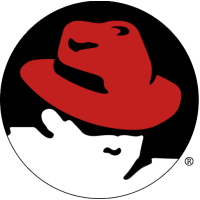
The problem in both cases is there are few pure plays. There's Red Hat RHT , and most of the rest remain privately held. And is that even a pure play, or is it more of a cloud thing these days? Based on its recent price earnings multiple, I'd say the latter.
It's even worse in renewable energy. The only pure play in solar is First Solar FSLR, but their cadmium telluride technology isn't mainstream. They're sort of the Apple Computer of the space – highly proprietary and resistant to standards. In wind there's American Superconductor AMSC, but their wind play turned out to be a mistake. They bought a line from a big Chinese company and they're paying the price.
This does not mean the trends aren't inevitable. They are. It just means that the public is not invited, as investors, yet. And that's really a good thing, because public company investing requires liquidity, stability, and visibility – none of which these sectors really offer (yet).

Right now everyone is saying “cloud” the way they said “app” last year and “open source” before that. It's a catch phrase everyone must respond to. Or as Dilbert's Scott Adams wrote a decade ago, “we won't give you money unless you mutter empty Internet buzz words that make us swoon.” To which Wally responded “ecommerce.”
Things haven't really changed.
Doesn't mean there isn't something real going on. (Been to a Border's lately? Better hurry. Or a travel agent? Too late.) There is.
Right now the heart of the game is to claim as much open source in the cloud as you can without risking your revenue stream. Everyone wants to be VMWare VMW, which is actually part of EMC but is the hottest stock in the cloud universe these days. (Their latest is a messaging system for their CloudFoundry PaaS called RabbitMQ.)

It's a system for creating Platform as a Service (PaaS) offerings using either open source or proprietary components. Mean nothing to do? Means it's supposed to turn what you already got, whatever that is, into cloud stuff. This can save on hardware costs, and enable a “rush to the rail” by users, whenever you give them something to rush toward.
PaaS needs another explanation here. The original Amazon EC2 offering was an Infrastructure, to which you brought tools and built applications. Put in some tools and instead of Infrastructure as a Service (IaaS) you have Platform as a Service (PaaS). PaaS is easier to use than IaaS, but you are restricted to using the tools supported by your PaaS system. (You say OpenLogic's CloudSwing lets you bring your old tools to your PaaS? Go to the head of the cloud – you just said your first sentence in cloud buzzword.)
What's the point of all this? Right now, money. PHPFog, which started as a system for writing PHP applications for the cloud, just renamed themselves AppFog and got an $8 million round of new financing.
Wally would be proud.










